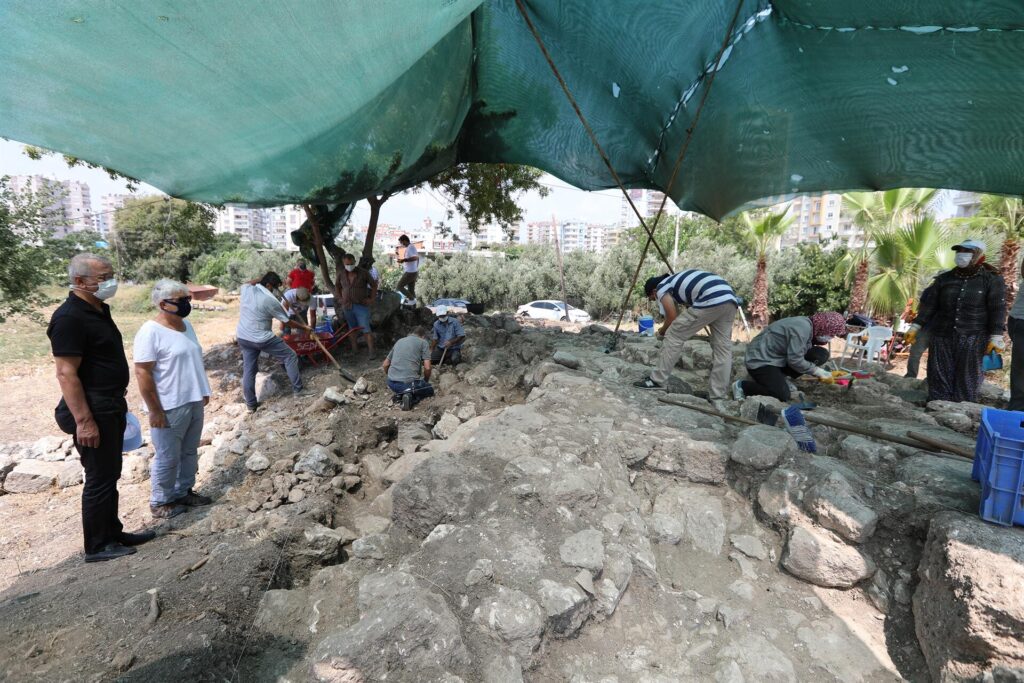More than 3,500 years ago a catastrophic volcanic eruption struck ancient Thera, known today as the Greek island of Santorini. Ash and pumice rained across the Mediterranean, and tsunami waves rolled onto faraway shores in Crete. In the 1960s archaeologists on Santorini uncovered a Minoan settlement frozen in time, with vibrant wall frescoes decorating multistory houses, all buried by volcanic debris.
The eruption was one of the most powerful volcanic explosions of the past 10,000 years and a crucial time point of the Mediterranean Bronze Age. It is also a major area of controversy in archaeology; researchers have argued for decades over the date of this cataclysm.
Although it does not settle the debate, a recent adjustment to the radiocarbon-dating process narrows down the possibilities. This much anticipated new calibration curve, a set of data points used to convert radiocarbon-dating results into calendar years, is highlighted in a special August issue of Radiocarbon. Called IntCal20, it draws from nearly twice the data of the previous curve, from 2013—and may prompt scientists to reevaluate the age of sites, artifacts and events around the world. Thomas Higham, a radiocarbon-dating specialist at the University of Oxford, who was not involved in the calibration effort, says:
“It's a really massive increase in the data set, and with each revision our ability to confidently date the past improves. A lot of people are excited about this new curve because it is going to give us the opportunity to sharpen our chronologies and understand more about the way the earth works and the way the earth has changed through time.”
All living things absorb carbon 14, a radioactive carbon isotope that decays at a regular rate over time. This means that shells, bone, charcoal and other organic materials that archaeologists find contain a chemical timestamp. Discovered in the late 1940s, radiocarbon dating transformed the study of prehistory and became the gold standard for establishing chronologies in archaeology. A second revolution came when scientists realized atmospheric carbon 14 levels vary over time as the result of fluctuations in solar activity—and, more recently, atomic bombs and fossil-fuel burning. Thus, radiocarbon dates need to be calibrated against independent measurements, primarily from chunks of ancient wood. These have annual growth rings that scientists can directly tie to calendar years and can also analyze for radiocarbon.
For the earliest internationally accepted calibration curves, developed in the 1980s, tree-ring measurements were available only for the past few thousand years. In contrast, IntCal20 draws from nearly 14,000 years' worth. It also includes far more single-year tree-ring measurements than previous versions, accounting for shorter-lived spikes from phenomena such as bursts of solar radiation. Other absolute measurements from natural archives, including ice cores, seasonal lake sediments and cave stalagmites, extend the new curve back to 55,000 years, close to the earliest age radiocarbon dating can track.
The International Calibration Working Group, formed in 2002, crowdsources data to produce new versions of the widely used curve. And besides IntCal20, which is intended for samples from the Northern Hemisphere, the group has created separate curves for objects from the Southern Hemisphere and the ocean, which have slightly different radiocarbon levels.
Of the 12,904 raw measurements included in IntCal20, more than 800 come from 1700 to 1500 B.C.—the best-dated prehistoric section of the curve. Scientists know Thera's cataclysmic eruption happened during that span, but they want to pinpoint when. Charlotte Pearson, a tree-ring scientist at the University of Arizona, who was part of the IntCal20 effort and studies Thera, says:
“If you had a really good, firm calendar date for this event ... it would mean that at any archaeological site in that region where you hit the ash, you would have an exact dated layer. That would pull together all the time lines for all these incredible cultures in this region, including the Minoans, the Hittites, the Hyksos and the ancient Egyptians."
But the date is elusive. Some pottery and ancient records point to the late 16th century B.C.; radiocarbon results have suggested a century or more earlier. Measurements that went into IntCal20 tighten the focus, but because the curve plateaus in this range, the data offer probabilities for a few windows of time rather than a definitive answer.
“The major difference is that the possible ranges are now substantially narrower,” says Sturt W. Manning, a Cornell University archaeologist, who led early Thera-related radiocarbon work and was involved in IntCal20. The calibration suggests a late-17th-century B.C. date is most likely, with another window in the earlier to mid-16th century B.C., he says. With these new data, the estimate “has become greatly more precise—but it's the same debate, ironically.” Nevertheless, Pearson thinks scientists are getting closer to a calendar year for the event. “I do think it is dateable,” she says. “It's just [a question of] which of the records is going to produce the clinching evidence.”
With IntCal20's release, scientists and archaeologists expect a rush of new studies that recalibrate data—and not just from the Bronze Age. The new curve bumps the transition period at the end of the last ice age to 50 years earlier. This may influence how archaeologists interpret data connected to the mass extinction of megafauna and the arrival of humans into the Americas—other contentious dates. IntCal20 also suggests the oldest Homo sapiens fossil known in Eurasia, the Ust'-Ishim man found in Siberia, may be 1,000 years younger than previously believed. Higham is particularly excited about new measurements in the range of 50,000 to 55,000 years ago; he hopes these will show more about how anatomically modern humans, migrating out of Africa, interacted and exchanged genes with archaic humans, including Neandertals and Denisovans.
Manning says the next IntCal will incorporate more regional variations in radiocarbon measurements, possibly explaining discrepancies from the period around the Thera eruption.
“We've moved to a new generation of accuracy and precision. With that will come a new focus on exactly what has been dated and how that radiocarbon age has been created.”





_-_Walters_48225.jpg)








